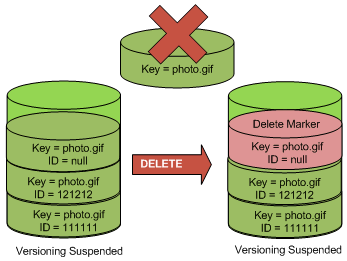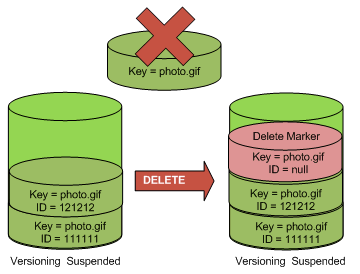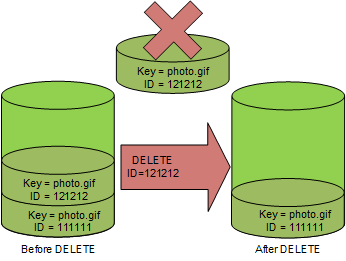Deleting objects from versioning-suspended buckets
You can delete objects from versioning-suspended buckets to remove an object with a null version ID.
If versioning is suspended for a bucket, a DELETE request:
-
Can only remove an object whose version ID is
null. -
Doesn't remove anything if there isn't a null version of the object in the bucket.
-
Inserts a delete marker into the bucket.
If bucket versioning is suspended, the operation removes the object that has a null
versionId. If a version ID exists, Amazon S3 inserts a delete marker that
becomes the current version of the object. The following figure shows how a simple
DELETE removes a null version and Amazon S3 inserts a delete marker in its
place instead with a null version ID.

To permanently delete an object that has a versionId, you must include
the object’s versionId in the request. Since a delete marker doesn't
contain any content, you'll lose the content for the null version when a
delete marker replaces it.
The following figure shows a bucket that doesn't have a null version. In this case,
the DELETE removes nothing. Instead, Amazon S3 just inserts a delete
marker.

Even in a versioning-suspended bucket, the bucket owner can permanently delete a
specified version by including the version ID in the DELETE request, unless
permissions for the DELETE request have been explicitly denied. For
example, to deny deletion of any objects that have a null version ID, you must
explicitly deny the s3:DeleteObject and s3:DeleteObjectVersions permissions.
The following figure shows that deleting a specified object version permanently removes that version of the object. Only the bucket owner can delete a specified object version.
